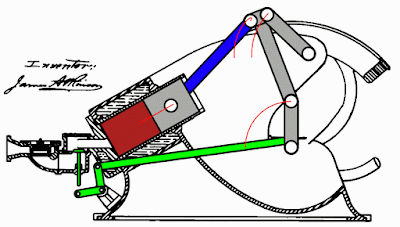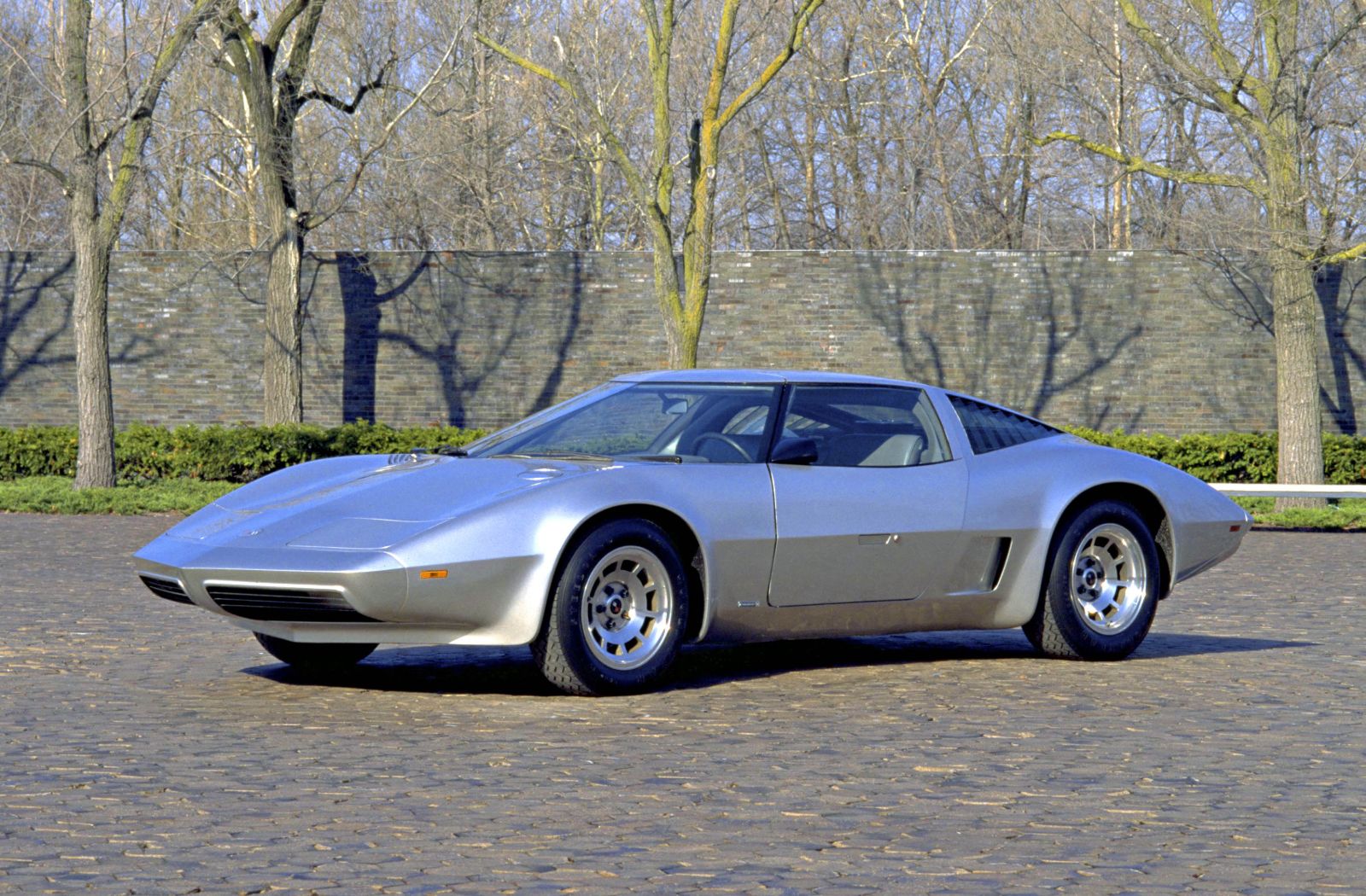Skip to comments.
Porsche's Idea for a Six-Stroke Internal Combustion Engine Looks Brilliant
Motor 1 ^
| September 17, 2024
| Christopher Smith
Posted on 09/23/2024 1:19:26 PM PDT by Red Badger
click here to read article
Navigation: use the links below to view more comments.
first previous 1-20, 21-40, 41-60, 61-67 next last
To: Getready
The belts constantly deteriorate and throw off bits of rubber that clog the oil pick-up in the pan. It’s like tires losing tread due to wear. The YouTube video I watched showed a clogged oil-pickup which starves the critical bearings of oil
The 50,000 mile belt change interval you quoted is what the guy in the video said, too. Who the heck wants a very expensive timing belt change-out every 50k miles?
All because the FedGov dictated “Your fleet goal is 50 mpg” without any consideration of the real world and peoples’ pocketbooks.
41
posted on
09/23/2024 3:32:41 PM PDT
by
ProtectOurFreedom
(May the soy boys, feminazis, and alphabet weirdos choke on the toxic fumes of our masculinity)
To: going hot
The technique for building maximum power in a small sized engine is not the same technique for creating maximum efficiency.
Back in the 1800s people chose more power over better efficiency. Running faster is one means of building more power at the expense of efficiency.
I would also point out that you are wasting more energy by releasing hot gas at 100 psi into the atmosphere than you are gaining by the scavenging effect of the gases evacuating the cylinder more quickly.
Just think how much force 100 psi would produce on a 12.5 square inches of piston? (2 inch radius for a 4 inch piston diameter.)
You are throwing away 1,250 of force at that pressure.
Imagine if you could expand that out another four volumes or something. It wouldn't be 1,250 for the entire travel, it would reduce in pressure as it expanded, and i'd have to get out Boyles law to determine exactly how much energy that was, but the point is it's more energy than it would take to just release gas to atmospheric pressure even if you have to have the exhaust stroke push it out of the cylinder.
Very little energy would be required to push gas out of a cylinder with an open port.
42
posted on
09/23/2024 3:38:13 PM PDT
by
DiogenesLamp
("of parents owing allegiance to no other sovereignty.")
To: Red Badger
To: ProtectOurFreedom
There is better tech out there already. Lowering Cd, using thermoplastic exterior body panels, adding overdrive on transmission, low rolling resistant tires, lowering final drive ratio all help improve mileage.....
44
posted on
09/23/2024 4:01:01 PM PDT
by
Getready
(Wisdom is more valuable than gold and harder to find.)
To: DiogenesLamp
The downward pressure exerted by the expanding gasses is one aspect, however there is the speed at which the gas expands versus the speed at which the piston face drops away.
On most expert's exhaustive (no pun intended) opinions/theories and application there of regards high performance work on motors, the slowing down of the gasses after the piston has traveled towards the bottom actually contributes very little to the creation of more torque.
The rate at which the piston is dropping, especially strokers, negated any benefit of continuing to keep the exhaust valve closed for purposes of placing continued expanding down pressure on the piston face.
The original force applied to the piston face as it comes over TDC and continues to press until the piston is well down the barrel, the gas wave front actually slows down below the speed of the piston, moving away, hence although there is pressure there, it is not a net useful pressure being placed on the piston face to continue to accelerate for creating additional torque.
If keeping the valve closed until bottom would be advantageous, all cams would be designed that way. However, for max creation of torque (or HP if high rpm motor) race /hi performance cams release the exhaust valve between 30-70 degrees before bottom for that very reason.
The gas is no longer creating useful pressure to drive the piston down.
45
posted on
09/23/2024 4:05:38 PM PDT
by
going hot
(Happiness is a Momma deuce)
To: The_Media_never_lie
To: going hot
“Waiting until the pressure is the same as atmosphere before opening the exhaust valve would be ok at very low rpm.”
With a tight engine, you may have to wait for a day or two before the cylinder pressure to go down to atomsphere before opening the exhaust valve. That would be an engine with a very low rpm of about .0007 rpm
47
posted on
09/23/2024 4:21:48 PM PDT
by
bosco24
To: going hot
The rate at which the piston is dropping, especially strokers, negated any benefit of continuing to keep the exhaust valve closed for purposes of placing continued expanding down pressure on the piston face. In a normal expansion engine. Nobody wants to release hot gases at 100 psi and probably 800 degrees in temperature, they do it because at the expansion they have allowed for that volume of fuel and air, they have reached bottom and can do nothing more with it except release it to the air. Now imagine if you had an engine, that once it reached what is now bottom, it could go on for two more volumes further?
You would get back that unused energy in the form of more torque.
Look up the Atkins cycle. It expansion stroke is marginally more than it's compression stroke, and it is slightly more efficient, all else being equal.

https://mechanicalboost.com/atkinson-cycle/
To get maximum efficiency, you have to keep allowing the gases to expand until there is no more pressure to expand further. No engine does this because the vast majority of engines require the expansion stroke to be the same length as the compression stroke. You have a 1 to 1 compression to expansion.
If you had a 1 to 2 or a 1 to 3, you could recover that energy that is currently being blown out the exhaust pipe.
People want compact fast running engines that produce a lot of power more than they want efficiency, so that's what they've been getting for the last 100 years.
48
posted on
09/23/2024 4:28:29 PM PDT
by
DiogenesLamp
("of parents owing allegiance to no other sovereignty.")
To: xoxox
exactly. could be a boon for the repair dept, however. Uggh just called to get the first oil change on our Porsche Macan S. $500.00 ughh like Porsche doesnt already make loads on the repair department......
49
posted on
09/23/2024 4:48:44 PM PDT
by
Moleman
To: Red Badger
50
posted on
09/23/2024 5:04:09 PM PDT
by
MikelTackNailer
(If you merely LOOK the fool people won't take you seriously.)
To: Getready
” Lowering Cd, using thermoplastic exterior body panels, adding overdrive on transmission, low rolling resistant tires, lowering final drive ratio”
All those are common and developed the past 50 years. They were the low-hanging fruit of mileage improvement. For the next round, it takes 10 times more money to get 1/10 the improvement. It’s the nature of physics, engineering, and economics.
51
posted on
09/23/2024 5:53:46 PM PDT
by
ProtectOurFreedom
(May the soy boys, feminazis, and alphabet weirdos choke on the toxic fumes of our masculinity)
To: bosco24
52
posted on
09/23/2024 5:58:44 PM PDT
by
going hot
(Happiness is a Momma deuce)
To: irishjuggler
I think the German term is Kidzinsatenserviche?
53
posted on
09/23/2024 6:08:17 PM PDT
by
dangus
To: READINABLUESTATE
"K. I. S. S." GREAT IDEA! Let's abandon 4-stroke engines and go back to 2-cycle!!! We don' need no stinkin' cams or poppet valves or timing chains! Reed valves and piston ports all around!
To: DiogenesLamp
To get maximum efficiency, you have to keep allowing the gases to expand until there is no more pressure to expand further. No engine does this because the vast majority of engines require the expansion stroke to be the same length as the compression stroke. You have a 1 to 1 compression to expansion. Most (all engines that are tasked with performing work) have to deal with parasitic loss of power. Dependng on the size of the carcass that needs to get down the road, after that fuel air mixture is ignited for a controlled expansion/burn, the expansion pushes the piston.
There comes a time, although there is still a lot of pressure buiding as you state, the pressure is insufficient to balance and overcome the pressure needed to get the drive wheels to rotate and propel the vehicle, much less accelerate.
Now,once at speed, there is of course far less torque needed to maintain the speed, so less force is needed to push on the pistons.
But for acceleration, the amount needed can not be generated from the piston after 140 plus degrees of travel, although the gas is still expanding, the net pressure is simply not sufficient, and actually becomes a hinderence, hence it is vented prior to that event.
People want compact fast running engines that produce a lot of power more than they want efficiency, so that's what they've been getting for the last 100 years.
Efficiency in what manner.
Is it MPG we are looking at? If so, max gearing and shutting off unused cylinders would help, would not be much fun to drive though, if hi performance is your desire.
Personally, for most of my life, I do truly love having a large reservoir of torque, either a handful, or a pedal full, just waiting to be lit.
55
posted on
09/23/2024 6:26:58 PM PDT
by
going hot
(Happiness is a Momma deuce)
To: Red Badger
From the country that brought us the two stroke automobile engine in the famous Trabant 601. Available in a limousine or an estate body. Or if you wanted something more powerful, there’s the Wartburg 353 - three 2 stroke cylenders instead of just two.
56
posted on
09/23/2024 6:28:32 PM PDT
by
PAR35
To: Red Badger
And OBTW, the 6-stroke internal combustion engine was invented in 1915. The 6-stroke steam engine in 1883.
To: ProtectOurFreedom
“Sounds like another ludicrous idea to meet the ridiculous CAFE standards. The auto makers will do anything to gain another 0.1 mpg”
They wouldn’t bother with the development cost for 0.1mpg.
58
posted on
09/23/2024 6:44:57 PM PDT
by
DAC21
To: Red Badger
To: Red Badger
A co.pany as big as Porache would not do this if they expected the glorious green revolution outlawed ICE.
But still.... too many things to break.
60
posted on
09/23/2024 7:33:51 PM PDT
by
Organic Panic
(Democrats. Memories as short as Joe Biden's eyes)
Navigation: use the links below to view more comments.
first previous 1-20, 21-40, 41-60, 61-67 next last
Disclaimer:
Opinions posted on Free Republic are those of the individual
posters and do not necessarily represent the opinion of Free Republic or its
management. All materials posted herein are protected by copyright law and the
exemption for fair use of copyrighted works.
FreeRepublic.com is powered by software copyright 2000-2008 John Robinson

